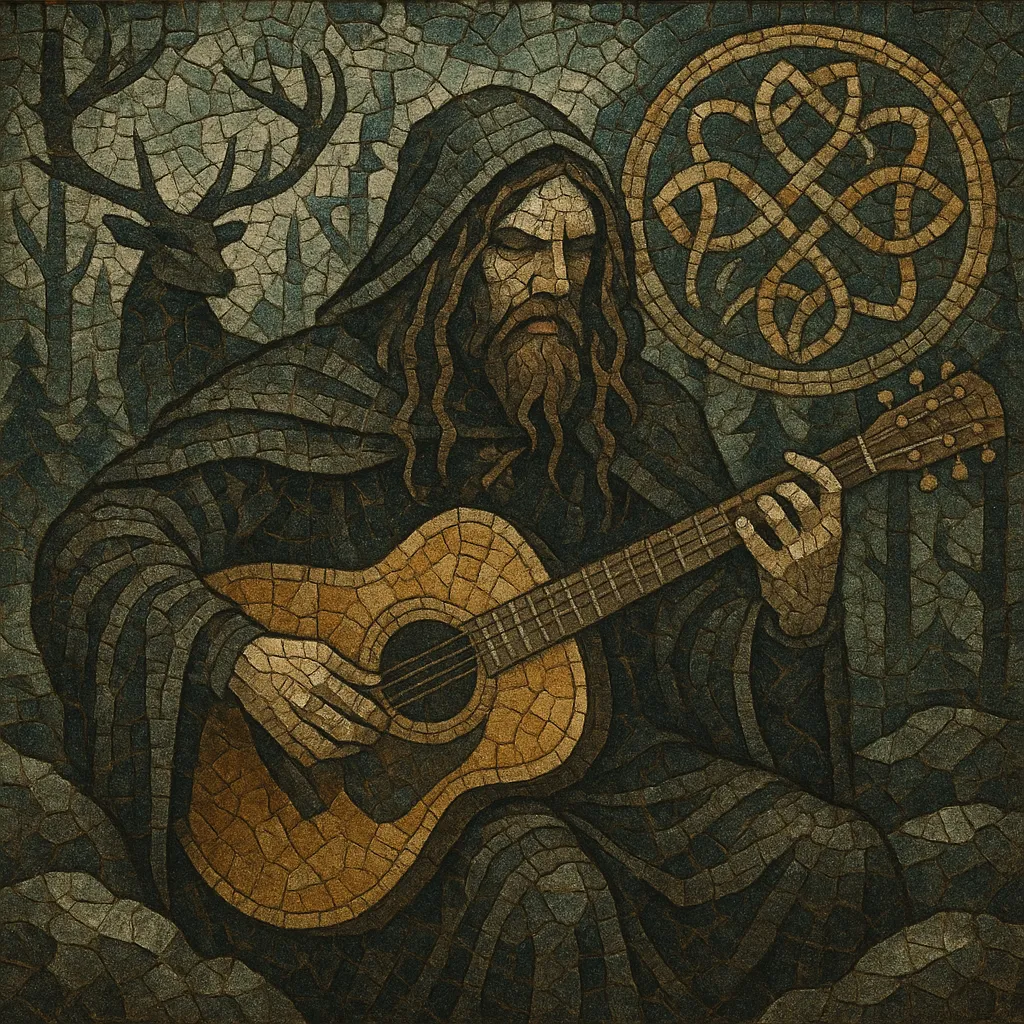Pagan black metal is a black metal offshoot that fuses the genre’s raw, tremolo‑picked riffing, blast beats, and harsh vocals with folk modalities, traditional instruments, and lyrics centered on pre‑Christian myth, nature, and regional heritage.
Aesthetically, it ranges from lo‑fi, windswept atmospheres to epic, hymn‑like arrangements with choirs, acoustic passages, and ambient interludes. Melodic lines often use modal scales (Aeolian, Dorian, and sometimes Phrygian), drones, and parallel fifths, evoking an archaic, ritual feel. Songs commonly alternate between ferocious black metal surges and contemplative folk segments, creating a sense of grandeur, nostalgia, and spiritual resistance.
Pagan black metal emerged from the second wave of black metal in the early 1990s, absorbing its raw sonics while shifting lyrical focus from Satanism and anti‑clerical shock to pre‑Christian heritage, animism, and nature. Key inspirations included Bathory’s epic “Viking era,” early Norwegian black metal’s atmosphere, and European folk traditions. Bands began weaving traditional melodies, native languages, and acoustic interludes into otherwise fierce black metal frameworks.
By the mid‑1990s, the approach crystalized across Scandinavia and Central/Eastern Europe. Groups from Norway, Poland, Germany, Ukraine, and Ireland developed distinct regional flavors, drawing on local myths and instruments. Production varied from cavernous lo‑fi to more expansive, atmospheric mixes. The thematic pivot toward cultural memory and landscape helped differentiate the style from broader black metal currents.
In the 2000s, pagan black metal expanded in scope and audience. Bands embraced longer song forms, ritual/choral textures, and more pronounced folk instrumentation (flutes, whistles, strings, hand drums). The line between “pagan black metal,” “folk black metal,” and “Viking black metal” often blurred, but the defining thread remained the union of black metal technique with pagan and nature‑centric narratives.
Later developments introduced richer production, layered choirs, and cinematic atmospheres, while others preserved a raw, windswept minimalism. The style continues to influence folk metal and atmospheric black metal, with artists emphasizing historical research, field‑recorded ambience, and regional identity. As with parts of black metal at large, scenes have at times been shadowed by ideological controversies around certain bands; however, the genre as a whole is musically defined by its fusion of black metal forms with pre‑Christian folk aesthetics and mythic storytelling.


